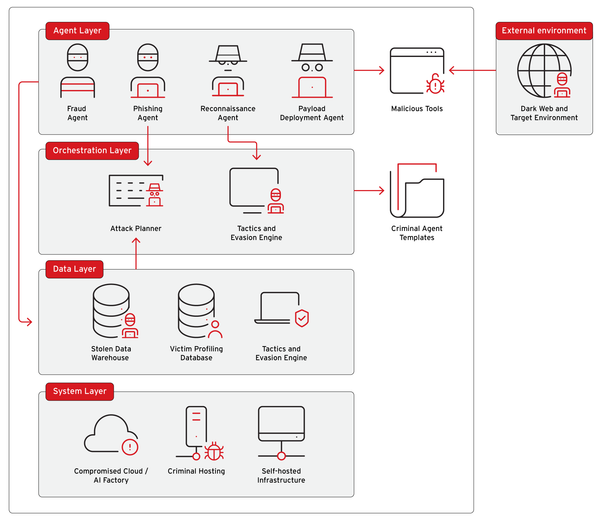AI and Deepfake Scams: The Future of Fraud and How to Stay Safe

In today’s digital age, artificial intelligence (AI) is transforming the world—making life easier, more efficient, and more connected. But there’s a dark side: scammers are weaponizing AI and deepfake technology to pull off next-level cons that are tougher to spot and more convincing than ever. Imagine a video of your favorite celebrity pitching a “guaranteed” investment, or a desperate phone call from a loved one begging for cash—only it’s all fake, crafted by AI to trick you. These high-tech hustles are on the rise, and they’re costing people millions. In this in-depth article, we’ll unpack how AI and deepfake scams work, share real-world examples, and arm you with practical tools to stay safe. Let’s dive into the future of fraud—and how you can outsmart it.

Why AI and Deepfake Scams Are a Big Deal
AI has come a long way, fast. What used to be clunky, obvious fakes are now hyper-realistic videos, voices, and messages that can fool almost anyone. Deepfakes—AI-generated content that mimics real people—are at the heart of this scam revolution. Scammers use them to impersonate CEOs, celebrities, or even your family members, all to trick you into handing over money or sensitive info.
The stats are staggering. The Federal Trade Commission (FTC) reported a 45% spike in AI-powered scams in 2023, with deepfake frauds racking up over $100 million in losses. Why? Because these scams prey on trust and emotion, and the internet’s global reach lets scammers strike from anywhere, vanishing without a trace. But here’s the good news: with the right know-how, you can spot these scams and protect yourself. Let’s break down how they work.
How AI and Deepfake Scams Pull You In
Scammers have a bag of AI tricks, each more cunning than the last. Here’s how they’re using tech to con people:
1. Deepfake Videos: Seeing Isn’t Believing
Deepfakes use AI to tweak videos and audio, making it look and sound like someone said or did something they never did. These fakes are so slick, they can trick even the sharpest eyes.
How It Works: Scammers might whip up a deepfake of a celebrity pushing a shady product, a politician stirring drama, or a “relative” in distress asking for cash. The aim? Get you to buy, invest, or send money based on what feels real.
Real-Life Example: In 2022, a deepfake video of Elon Musk touting a bogus cryptocurrency spread like wildfire online. It was so convincing that thousands invested, losing $2 million before the scam unraveled.
2. Voice Cloning: Hearing Is Deceiving
AI can clone someone’s voice with eerie accuracy, turning a few audio clips into a perfect impersonation. This is a scammer’s dream for phone-based fraud.
How It Works: They call or send voice messages pretending to be someone you trust—a boss, a friend, anyone—often with an urgent plea. “I’m stuck overseas, wire me $1,000!” or “Approve this payment now!” The voice matches, so you believe it.
Real-Life Example: In 2023, a finance manager got a call from her “CEO” demanding a $500,000 transfer to a vendor. The voice was spot-on, but it was an AI clone. The real CEO had no clue—until the money was gone.
3. AI-Powered Phishing: Emails That Know You
Phishing emails have leveled up with AI. These aren’t your grandma’s obvious spam—they’re tailored, sneaky, and personal.
How It Works: AI scans your social media, shopping habits, or even past emails to craft messages that hit home. They might mention a recent trip or a friend’s name, luring you to click a bad link or spill your details.
Real-Life Example: A small business owner got an email from a “supplier” about a recent order, complete with the right logo. It asked for updated payment info—she gave it, only to lose her credit card to scammers.
4. Fake Celeb Ads: Star Power, Scam Style
Celebrities sell, and scammers know it. AI lets them fake endorsements that look legit, from social media posts to full-blown video ads.
How It Works: You see a famous face—like a singer or actor—praising a “miracle” cure or a “can’t-lose” investment. It’s all AI-made to cash in on their fame and your trust.
Real-Life Example: In 2024, a deepfake Taylor Swift ad pushed a crypto scam on social media. Fans lost thousands, and Swift’s team had to publicly disavow it.

Spotting the Scam: Red Flags to Watch For
AI scams are slick, but they’re not flawless. Here’s how to catch them before they catch you:
- Weird Vibes or Requests: A friend begging for money via text or email? A celeb hawking a random product? Double-check it. Scammers lean on oddball asks.
- Video or Audio Glitches: Look for lip-sync issues, robotic tones, or jerky movements. Deepfakes are good, but not perfect.
- Too-Good-to-Be-True Deals: If it promises big rewards with no risk, it’s a trap. Real celebs don’t peddle “instant wealth” schemes.
- Rush Tactics: “Act now or lose out!” is a scammer’s favorite line. Take a beat—legit stuff doesn’t pressure you like that.
- Shady Links: Unsolicited messages with links or files? Don’t click. Check URLs by hovering first.
Your Toolkit: How to Stay Safe
Beating AI scams takes smarts and a few simple habits. Here’s your game plan:
1. Verify Everything
- Cross-Check Claims: Video of a celeb or politician? Search for legit sources to back it up. No hits? It’s fake.
- Reverse Image Search: Use Google to trace images or videos. Deepfakes often recycle real clips.
- Pick Up the Phone: Urgent request from someone you know? Call them directly—don’t trust the message alone.
2. Lock Down Your Digital Life
- Two-Factor Authentication (2FA): Add this to your accounts. Even if scammers snag your password, they’re stuck.
- Strong Passwords: Mix it up—letters, numbers, symbols—and don’t reuse them. A password manager helps.
- Social Media Smarts: Keep personal info private. Scammers mine public profiles for ammo.
3. Spread the Word
- Learn the Latest: Follow cybersecurity news to stay ahead of new tricks.
- Teach Others: Share this with family and friends—especially those less tech-savvy. Knowledge saves wallets.
Caught in a Scam? Here’s What to Do
Act fast if you think you’ve been hit:
- Cut Contact: Stop talking to the scammer immediately.
- Report It: Tell the FTC at ftc.gov/complaint and alert your bank if money’s involved.
- Secure Yourself: Update passwords, turn on 2FA, and watch your accounts for funny business.

The Bottom Line: Stay Sharp, Stay Safe
AI and deepfake scams are the future of fraud, and they’re evolving fast. Scammers will keep pushing the boundaries of what’s possible, but you don’t have to be a victim. Trust your gut, verify what you see and hear, and take your time before acting. Share this guide to help others dodge these high-tech hustles, too. Together, we can make the digital world a safer place—one savvy step at a time.








